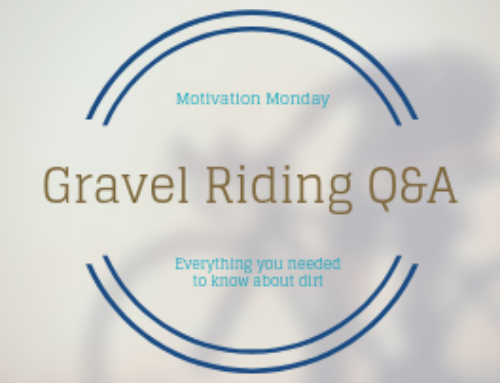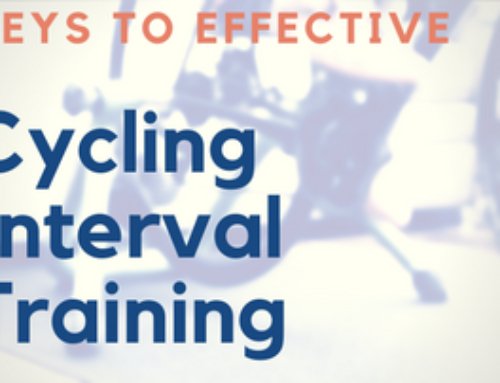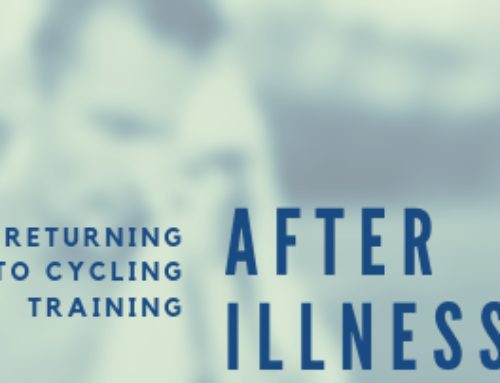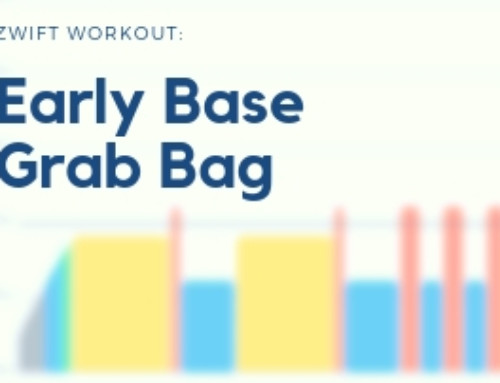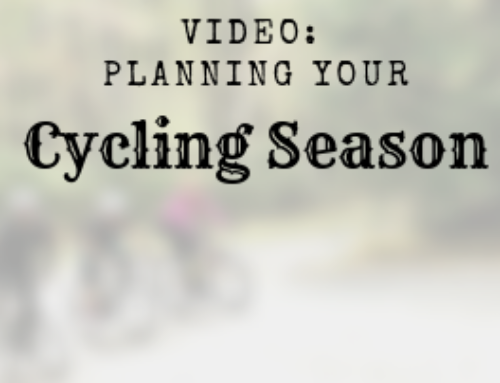Periodization is one of the ways to ensure your cycling fitness progresses throughout the season. But in my last podcast, “Why Cyclists Don't Need Traditional Base Training” I talked briefly about the concept of reverse periodization. What is reverse periodization, how can it benefit the average cyclist and when should you apply it to your training in order to get the most bang for your training buck?
In this episode of the Tailwind Coaching Podcast, I'll delve into the differences between periodization and reverse periodization. I'll also give you some tips about how to apply reverse periodization concepts to your own training and give some examples of the types of interval efforts you'll typically see in a reverse periodization training plan.
Click through for the show notes and remember that the sponsor for this episode of the Tailwind Coaching Podcast is Stages Cycling. Click that link, check out their excellent power meter offerings and help support the show with your purchase.
Don't forget to share this post with your friends, on Facebook, Twitter and via email.
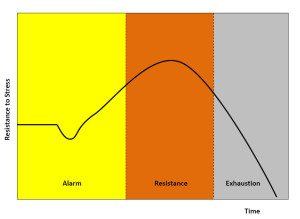 What is Periodization?
What is Periodization?
Periodization is a training concept that has been in use in the athletic community since the mid-1950s, based on Hans Selye's General Adaptation Syndrome (GAS for short.) In short, it describes how the body adapts to changes in stimulus based on different phases of alarm, resistance/adaptation and exhaustion. Those phases generally correlate to training stimulus, recovery/adaptation and overtraining.
Periodization is a concept of systematically modulating hard work with rest, dividing it into cycles (or blocks.)
- Periodization can be summarized by “The closer you get to your goal, the more like your goal the training becomes.”
- For example, if racing a crit is the goal, training gets more like a crit, if gran fondos or centuries are the goal, training gets more fondo or century like.
- Training needs to be specifically metered out in order to prevent overtraining (or entering the exhaustion phase of GAS.)
- To properly dose training, stimulus is broken down into specific cycles as described below.
The Cycles of Periodization
Macrocycle – The “annual” cycle or the entire training season, working towards the main competition of the year. The macrocycle is generally broken down into the following phases:
- Prep – This is the preparatory phase of training, generally 2-4 microcycles. Traditionally includes weight training, stability work and such. Low intensity, low volume.
- Base – Used to establish basic skills and abilities, usually lasting 8-12 microcycles. Traditionally, lots of zone 2 endurance work and some neuromuscular conditioning. Low intensity, high volume.
- Build – 8-10 Microcycles, traditionally used to build race-specific fitness (VO2 and other high intensity work is a staple of this phase.) High intensity, lower volume.
- Peak – 1-2 microcycles, increases rest and race specificity of training. Very high intensity, very low volume.
- Race – 1 microcycle, rest/taper and prepare to race. Minimal volume, high intensity.
- Transition – Variable duration (up to 8 microcycles), rest and recover.
Mesocycle – A sub-unit of the macrocycle, each mesocycle is generally around 20% to 25% of the total macrocycle. Typically, a mesocycle is made of up 2-6 weeks (or microcycles) each.
Microcycle – The smallest breakdown unit of periodization, each microcycle is generally a week in duration (mainly due to the difficulty of building microcycles outside a calendar week.)
The Traditional Periodization Paradigm
With traditional periodization, the paradigm can easily be described as “start with high volume, moving towards high intensity.” This typically means that you're sacrificing some volume for intensity as the season progresses. The theory here is if you don't modulate volume and intensity you'll exceed the ability of the body to adapt and dip into the overtraining realm.
So how does reverse periodization differ from the traditional model?
The Misconception of Reverse Periodization
Remember that training stimulus is not all about intensity and volume. There's a lot more to it, and reverse periodization is no different: it's not about ONLY intensity and volume, but how you apply it. It's not about doing less work in the base phase compared to regular periodization. It's about doing different kinds of work, and you can evaluate your progress by using TSS to evaluate your training loads. It's also worth noting that reverse periodization works best for longer events, but you can tailor it to any specific event.
The reason why it works so well for longer events (or those with high base skill proficiency, such as neuromuscular capacity, muscular endurance capacity, etc) follows the same reasoning put forth in the periodization explanation above: as you get closer to your event, your training becomes more like the event. Training volume generally increases during the season (as the weather gets nice, fitness increases, etc.) so this makes sense. You'll be riding more miles in the summer than the winter, and in general those miles get harder overall as well.
In terms of practical vs laboratory application, the muscular and energy demands of slow speed, zone 2 training are entirely different than high speed, high-intensity zone 5/6/7 training. The expectation in a traditional periodization plan is your body will have to reprogram itself to adapt to higher intensity training. In a reverse periodized plan, your body will have to adapt to increased volume at a similar intensity.
Train to your goals, right?
What Should Reverse Periodization Look Like?
A reverse periodization training plan looks a little bit like an inverted pyramid or a diamond:
- Less volume in base, focusing on quality of work.
- Specifically target neuromuscular gains and muscular endurance gains.
- Include some high-intensity work during the base phase to raise VO2 max ceiling (one day per week, up to Z5, short volume d/t less trained state.)
- Include strength and stability training, core stability training.
- In the build phase, increase volume while also maintaining higher intensity, including Z6/7 (train more like racing).
- Continue maintaining fundamentals while adding intensity.
- Maintain strength and core stability work during the build phase.
- Peak and race has even higher intensity and less volume.
- Typically combine peak and race into 1 mesocycle and think of it as a block.
- Transition as needed depending on further goals.
In other words, while the traditional periodization follows the “volume to intensity” model, reverse periodization follows the “intensity to volume AND intensity” model.
Periodization vs Reverse Periodization
Periodization works well for those with lots of time in winter, those in warm climates or those lacking base aerobic fitness who need significant volume to build aerobic capacity. It's also perfect for pros.
Reverse periodization works well for those without a lot of winter time, those in cold climates, or those doing long events (or those who are working with a coach and can have their fitness re-evaluated at regular intervals.)
Podcast: Play in new window | Download (Duration: 48:36 — 66.7MB)
Now that you've got some info on periodization and reverse periodization, why not give it a shot and get in shape for next season? Switch up your training program with the great training options available in my downloadable training plan store. Get your foundational base work done with my Unbreakable Core Stability module and Raw Strength training plan. Then you can pick from a number of plans like my Full Season Training Solution or Advanced Full Season Training Solution to get your fitness on the upswing for spring. You can also get a ton of great training tips FOR FREE by signing up for the Tailwind Coaching Newsletter. Get my best coaching tips delivered to your inbox, along with a free bonus training plan, updates, and exclusive discounts!
If you enjoyed this episode, please do me a favor and head over to the Tailwind Coaching Podcast on iTunes and rate it 5 stars. A positive review helps the podcast move up the ratings, reach more listeners, and help more people get stronger, faster and fitter. Don't forget to post any questions to the Tailwind Coaching Facebook page, on the Tailwind Coaching forums, contact me via email or leave a comment below. Don't forget to support our sponsors and help to keep this podcast free, help me to get this information to more people and help grow the cycling community.
[wdsm_ad id=”5402″ class=” aligncenter” ]

